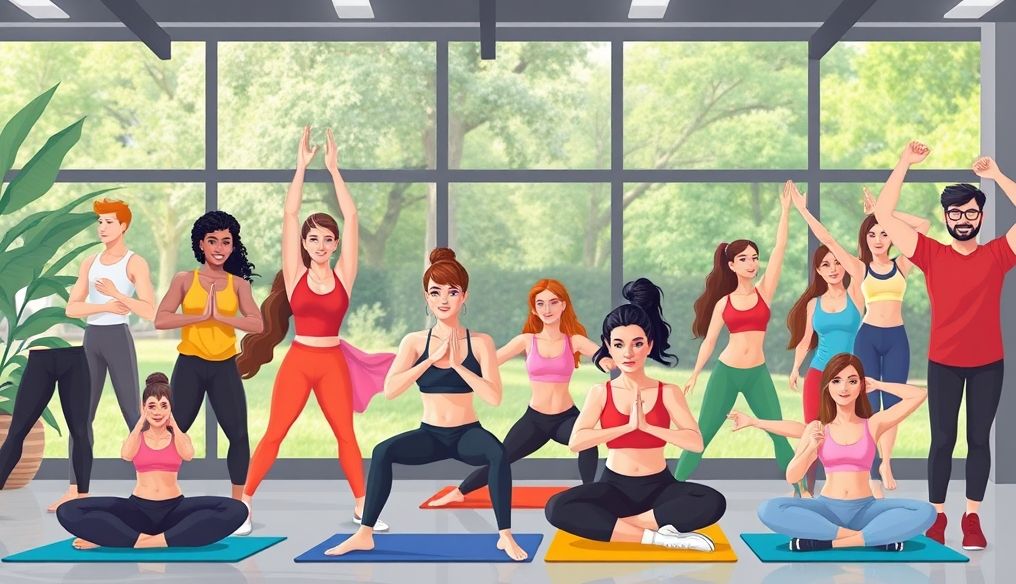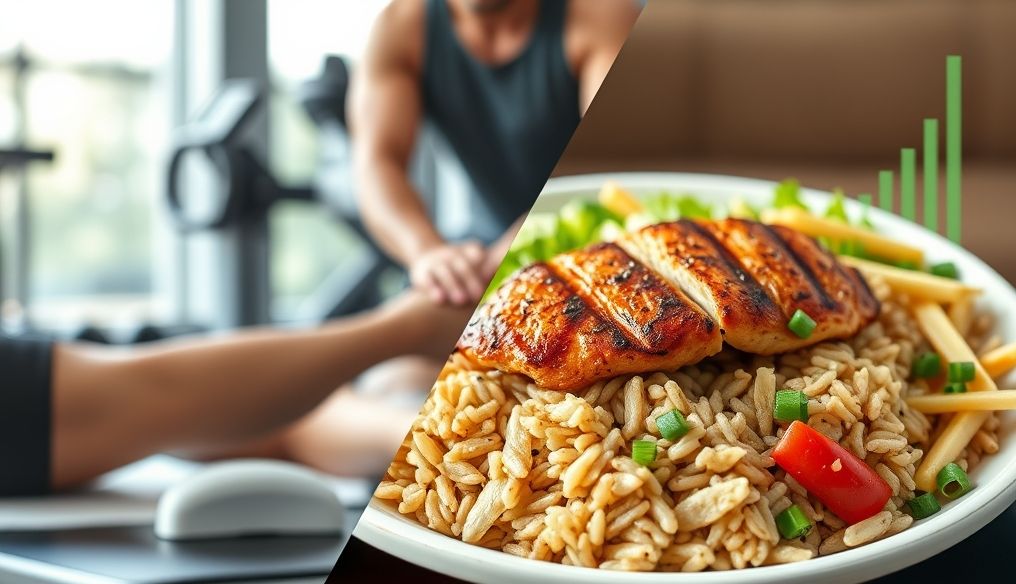Introduction: Body Flexibility and Fitness - Keys to Health and Vitality
Flexibility and fitness are not just words associated with sports; they are the foundation of general health and the ability to enjoy life to the fullest. A flexible and strong body allows you to move easily, reduces the risk of injury, and improves your performance in daily activities. Whether you are a professional athlete or someone seeking to maintain their health, improving body flexibility and fitness is a real investment in your future.
Chapter 1: Understanding Flexibility and Fitness
What is Flexibility?
Flexibility is the ability of a joint to move through its full range of motion. Flexibility is affected by several factors, including:
- Joint Structure: The type and shape of the joint determine its range of motion.
- Ligaments and Tendons: These connective tissues connect bones to bones and muscles to bones, affecting flexibility.
- Muscles: Short and tight muscles limit flexibility.
- Nervous System: The nervous system plays a role in regulating muscle tone and response to stretching.
What is Fitness?
Fitness is a general state of health that includes several components, including:
- Cardiovascular Endurance: The ability of the heart and lungs to supply the body with oxygen during activity.
- Muscle Strength: The ability of muscles to generate force.
- Muscle Endurance: The ability of muscles to work for a long time without fatigue.
- Flexibility: As mentioned earlier, the ability of a joint to move through its full range of motion.
- Body Composition: The proportion of fat, muscle, and bone in the body.
Chapter 2: Benefits of Increasing Flexibility and Fitness
Improving flexibility and fitness has numerous benefits, including:
- Reduced Risk of Injury: A flexible and strong body is less prone to injury, especially during exercise or physical activities.
- Improved Athletic Performance: Flexibility helps athletes achieve a wider range of motion, improving their performance in various sports.
- Pain Relief: Exercise and stretching can help relieve chronic pain, such as back and neck pain.
- Improved Posture: Strong and flexible muscles can help maintain good posture, reducing stress on joints and muscles.
- Increased Range of Motion: A flexible body allows you to move more easily and perform daily activities without difficulty.
- Improved Circulation: Exercise and stretching improve blood circulation, helping to deliver oxygen and nutrients throughout the body.
- Stress Reduction: Stretching and exercise can help relieve stress and anxiety.
Chapter 3: Warm-up and Cool-down Exercises: The Foundation of Flexibility and Fitness
Warm-up and cool-down are essential parts of any exercise program. The warm-up prepares the body for physical activity, while the cool-down helps the body recover after exercise.
Warm-up Exercises
The warm-up should include light exercises that increase blood flow to the muscles and raise body temperature. Examples of warm-up exercises:
- Light Walking
- Jogging in Place
- Arm Circles
- Dynamic Stretching (such as leg swings)
Cool-down Exercises
Cool-down exercises help gradually lower heart rate and blood pressure, and prevent muscle cramps. Examples of cool-down exercises:
- Slow Walking
- Static Stretching (such as touching your toes)
- Deep Breathing
Chapter 4: Types of Flexibility Exercises
There are several types of flexibility exercises, each with its own benefits:
- Static Stretching: Involves holding a stretched position for 15-30 seconds. This type of stretching is effective in improving general flexibility.
- Dynamic Stretching: Involves moving through a full range of motion. This type of stretching is effective in improving athletic performance.
- Ballistic Stretching: Involves using bouncing to increase the range of motion. This type of stretching carries a risk of injury, so it should be avoided by beginners.
- Proprioceptive Neuromuscular Facilitation (PNF) Stretching: Involves contracting and then relaxing the muscles. This type of stretching is very effective in improving flexibility.
Chapter 5: Strength Training: Building the Foundation of Fitness
Strength training is important for building muscle and increasing endurance. Strength training can be done using free weights, weight machines, or body weight.
Basic Strength Exercises
- Squats: Strengthen the muscles of the legs and buttocks.
- Push-ups: Strengthen the muscles of the chest, shoulders, and arms.
- Pull-ups: Strengthen the muscles of the back and arms.
- Lunges: Strengthen the muscles of the legs and buttocks.
- Plank: Strengthen the muscles of the abdomen and back.
Chapter 6: Cardio Exercises: Promoting Cardiovascular Health
Cardio exercises are important for improving cardiovascular health and increasing endurance. Examples of cardio exercises:
- Walking: An easy exercise suitable for all levels.
- Running: A more intense exercise than walking.
- Swimming: An excellent full-body workout.
- Cycling: A great exercise for strengthening the legs.
- Dancing: A fun exercise that burns calories.
Chapter 7: Nutrition and its Importance in Improving Flexibility and Fitness
Proper nutrition plays a crucial role in improving flexibility and fitness. Your diet should include the following nutrients:
- Protein: Necessary for building and repairing muscles.
- Carbohydrates: Provide the energy needed for exercise.
- Healthy Fats: Necessary for heart and brain health.
- Vitamins and Minerals: Necessary for various body functions.
- Water: Necessary to maintain body hydration and prevent dehydration.
Eat plenty of fruits and vegetables, whole grains, lean proteins, and healthy fats. Avoid processed foods, sugary drinks, and saturated fats.
Chapter 8: Additional Tips for Improving Flexibility and Fitness
- Be Consistent: Try to exercise regularly, even if it's for a short time.
- Listen to Your Body: Don't push yourself beyond your ability.
- Get Enough Sleep: Sleep is essential for muscle recovery and repair.
- Reduce Stress: Stress can negatively affect flexibility and fitness.
- Consult a Professional: If you have any health problems, consult your doctor or physical therapist before starting any exercise program.
Chapter 9: Flexibility and Fitness at Different Stages of Life
The needs for flexibility and fitness change as we age. It is important to adapt your exercise program to your current stage of life.
Flexibility and Fitness in Childhood and Adolescence
At this stage, it is important to focus on developing healthy habits and encouraging regular physical activity. Sports and play can help build strong bones and muscles, improve flexibility, and develop motor skills.
Flexibility and Fitness in Adulthood
At this stage, it is important to maintain a good level of fitness and flexibility. Exercise can help prevent chronic diseases, maintain a healthy weight, and improve mood.
Flexibility and Fitness in Old Age
At this stage, it is important to maintain as much flexibility and fitness as possible. Exercise can help maintain independence, reduce the risk of falls, and improve quality of life.
Chapter 10: Tools and Techniques to Enhance Flexibility and Fitness
There are several tools and techniques that can help enhance flexibility and fitness, including:
- Foam Rollers: Used to massage muscles and relieve tension.
- Massage Balls: Used to target specific points of tension in muscles.
- Resistance Bands: Used for strength and flexibility exercises.
- Fitness Apps: Help track progress and motivate you to exercise.
- Fitness Trackers: Monitor your physical activity and heart rate.
Conclusion: Invest in Your Health and Your Future
Increasing body flexibility and fitness is not just an athletic goal, but an investment in your health, happiness, and future. By following the tips and strategies mentioned in this article, you can achieve a flexible and strong body, and enjoy a more active and vibrant life. Remember that the journey begins with a step, so start today and enjoy the benefits you will reap in the long run.




